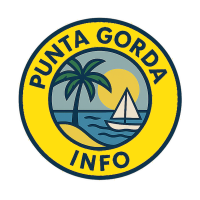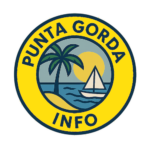Hurricane Preparation & Recovery Guide
Evacuation tips, supply checklists & local recovery resources
Hurricane Preparation and Recovery Guide
for Punta Gorda Florida
Hurricane season in Florida brings unique challenges that require thorough preparation and knowledge of recovery resources. This guide provides essential information to help Charlotte County residents prepare for, survive, and recover from these powerful storms.
Understanding Hurricane Risks and Classifications
Hurricanes pose significant threats to Florida’s coastal communities, particularly Charlotte County with its vulnerable Gulf Coast location. The official hurricane season runs from June 1 to November 30, with peak activity occurring between August and October. Understanding hurricane classifications helps residents prepare appropriately.
| Category | Wind Speed | Damage Potential |
|---|---|---|
| 1 | 74–95 mph | Minimal |
| 2 | 96–110 mph | Moderate |
| 3 | 111–130 mph | Extensive |
| 4 | 131–155 mph | Extreme |
| 5 | 156+ mph | Catastrophic |
Key Terms to Know
- Hurricane Watch: Possible within 48 hours
- Hurricane Warning: Expected within 36 hours
- Storm Surge Warning: Life-threatening coastal flooding expected
- Tropical Storm Warning: Winds of 39–73 mph expected
Evacuation Zones in Charlotte County
Charlotte County uses a color-coded evacuation zone system (A–E). Know your zone before a storm hits. Look for color collars on stop signs, visit the county website, or call Emergency Management at 941-833-4000.
Hurricane Supply Kit Essentials
- 1 gallon of water per person per day (7-day supply)
- 7 days of non-perishable food
- Prescription medications (2-week supply)
- First-aid kit, flashlight, batteries, hygiene items
- Important documents in waterproof container
- Cash, tools, extra clothes, and phone chargers
Shelter Information
Charlotte County may open select shelters during a storm. All are pet-friendly. Bring your own supplies, and pre-register if you have special medical needs.
Post-Storm Recovery
Wait for official clearance before returning home. Document all damage with photos. Wear protective gear and avoid floodwaters. Contact your insurance and start filing claims immediately.
Important Contacts
- Emergency: 911
- Charlotte EOC: 941-833-4000
- FPL Outages: 1-800-468-8243
- FEMA: 1-800-621-3362
- Charlotte Utilities: 941-764-4300
Creating a Family Emergency Plan
A well-developed family emergency plan is the foundation of hurricane preparedness. Your plan should include an evacuation strategy, communication protocol, designated meeting locations, considerations for special needs, and pet preparations.
Know your evacuation zone, identify multiple evacuation routes, and establish destinations outside the threatened area. Practice these routes with family members to ensure familiarity during emergencies. Establish how family members will communicate if separated, and designate an out-of-area contact person that everyone can check in with, as local communications may be disrupted.
Designate primary and alternate meeting places both within your neighborhood and in a nearby town should your neighborhood be inaccessible. Develop specific plans for family members with disabilities, medical conditions, or other special needs. Charlotte County residents with special medical needs should pre-register for the Special Needs Shelter by visiting snr.floridadisaster.org or contacting Emergency Management at 941-833-4000.
Include pets in your emergency planning. Identify pet-friendly shelters or accommodations, and prepare a pet emergency kit including food, water, medications, and documentation.
Securing Your Home
- Structural Inspection: Examine your roof, windows, doors, and foundation for vulnerabilities. Make necessary repairs before hurricane season begins.
- Window and Door Protection: Install permanent storm shutters or prepare 5/8-inch marine plywood panels cut to fit each window and door. Have mounting materials ready for quick installation.
- Landscaping Management: Trim trees and shrubs regularly to reduce potential projectiles. Remove dead branches and ensure trees are not threatening power lines or structures.
- Outdoor Item Securement: Create a plan to quickly bring in or secure outdoor furniture, decorations, garbage cans, and other items that could become dangerous projectiles.
- Gutters and Downspouts: Ensure these are clear of debris to allow proper water drainage and reduce flooding risk.
- Garage Door Reinforcement: Standard garage doors are particularly vulnerable to wind damage. Consider installing a hurricane-rated door or using a bracing kit on existing doors.
Evacuation Planning for Charlotte County
Understanding Charlotte County’s Evacuation Zones
- Look for colored collars on stop signs at major intersections
- Visit CharlotteCountyFL.gov and use the “Know Your Zone” tool
- Call Charlotte County Emergency Management at 941-833-4000
- Your zone is under a mandatory evacuation order
- You live in a mobile home or RV
- Your home was built before 1973
- Your residence is in a flood-prone area
Charlotte County Shelter Information
Charlotte County has limited shelter capacity and no certified Red Cross shelters due to elevation concerns. Residents are encouraged to consider all other evacuation options before relying on a public shelter.
If shelters are opened during an emergency, possible locations may include:
- Kingsway Elementary School (23300 Quasar Blvd., Port Charlotte)
- Liberty Elementary School (370 Atwater St., Port Charlotte)
- Neil Armstrong Elementary School (22100 Breezeswept Ave., Port Charlotte)
- Harold Avenue Regional Park Recreation Center (23400 Harold Ave., Port Charlotte)
Important shelter considerations
- Not all shelters open for every storm; check local media and CharlotteCountyFL.gov for open shelter information
- All Charlotte County shelters are pet-friendly
- Bring your own emergency supplies, food, water, and bedding
- Special needs shelters require pre-registration through Emergency Management
Transportation Considerations
Plan your evacuation transportation well in advance:
- Keep your vehicle well-maintained and your fuel tank at least half full throughout hurricane season
- Identify alternative transportation options if you don’t have a vehicle
- Be aware that during major evacuations, Florida may implement Emergency Shoulder Use (ESU) on certain highways to increase traffic capacity
- Consider leaving early to avoid heavy traffic and fuel shortages that typically occur as storms approach
Safety During Hurricanes
If You Must Shelter in Place
If evacuation is impossible or not required for your area, take these precautions when sheltering in place:
- Choose the safest location — stay in a small, interior room without windows on the lowest level of your home, away from exterior walls
- Avoid flood-prone areas — if flooding threatens, move to higher levels but avoid closed attics where rising water could trap you
- Stay informed — use a battery-powered radio to monitor emergency broadcasts; sign up for Alert Charlotte notifications at charlottecountyfl.gov
- Conserve power — limit electronic device usage to preserve battery life for essential communications
- Water safety — fill bathtubs and containers with water for sanitation use (not drinking) in case water service is disrupted
Critical Safety During the Storm
Following these life-saving practices during a hurricane is essential:
- Stay inside — remain indoors throughout the entire storm, even during the calm “eye” period. Wait for official confirmation that the storm has passed
- Avoid floodwaters — never walk, swim, or drive through floodwaters. Just six inches of moving water can knock a person down, and one foot can sweep away a vehicle
- Stay away from windows — even if windows are boarded or have impact-resistant glass, keep away from them during high winds
- Monitor carbon monoxide — if using generators, keep them outdoors at least 20 feet from buildings and away from windows. Install battery-powered carbon monoxide detectors
- Communicate efficiently — reserve phone calls for genuine emergencies. Use text messages or social media for regular communications to reduce network congestion
Post-Storm Safety and Recovery
Returning Home Safely
When returning to your home after evacuation:
- Wait for official clearance — return only when authorities declare it safe. Check charlottecountyfl.gov or local media for updates
- Inspect before entering — examine your home’s exterior for structural damage, gas leaks, or downed power lines before entering
- Document everything — photograph and video all damage before beginning cleanup for insurance purposes
- Use proper protection — wear sturdy shoes, long sleeves, work gloves, and respiratory protection during cleanup. Floodwaters often contain contaminants
- Check utilities — do not turn on utilities if you suspect damage. Have professionals inspect electrical, gas, and water systems
Conducting a Thorough Damage Assessment
When assessing your property:
- Structural evaluation — check for visible structural damage to your home’s foundation, roof, and walls
- Water damage inspection — look for water stains, buckling floors, and dampness in attics or crawl spaces that might indicate water intrusion
- Mold awareness — be alert for visible mold growth or musty odors that suggest hidden moisture problems
- Electrical system check — watch for damaged wiring, sparks, or burning smells that could indicate electrical hazards
- Detailed documentation — create a comprehensive inventory of damaged items and structural issues. Take close-up and wide-angle photos of all damage
Recovery Resources for Charlotte County
Emergency Services
- Life-threatening emergencies: 911
- Charlotte County Emergency Operations Center: (941) 833-4000
- Sheriff Non-Emergency (Punta Gorda & Port Charlotte): (941) 639-2101
- Sheriff Non-Emergency (Englewood): (941) 474-3233
Utility & Infrastructure
- Florida Power & Light Outages: 1-800-468-8243
- TECO/Peoples Gas Emergencies: 1-877-832-6747
- Charlotte County Utilities: (941) 764-4300
State & Federal Assistance
- State Assistance Information Line (SAIL): 1-800-342-3557
- FEMA Helpline: 1-800-621-3362
- Florida Division of Emergency Management: (850) 815-4000
Disaster Assistance Programs
SBA Disaster Loans
Community Recovery Resources
- COAD: Financial and repair assistance for eligible residents
- United Way of Charlotte County: Additional local support services
- Project HOPE (Mental Health Services): (941) 347-6422
- Florida Rural Legal Services: Legal assistance for disaster-related needs
Filing Insurance Claims Effectively
The insurance claim process requires careful attention to detail:
- Immediate notification — contact your insurance company as soon as possible after the storm. Florida law requires insurers to acknowledge claims within 14 days
- Comprehensive documentation — take extensive photos and videos of all damage before beginning cleanup. Keep detailed records of all communication with your insurer
- Temporary repairs — make only repairs necessary to prevent further damage (like covering a damaged roof with a tarp) until an adjuster has inspected the property. Save all receipts
- Understanding coverage — standard homeowners insurance typically covers wind damage but not flood damage. Separate flood insurance is needed for water damage from storm surge or rising water
- Adjuster inspection — be present during the adjuster’s inspection to point out all areas of damage. If you disagree with their assessment, consider hiring a public adjuster to represent your interests

